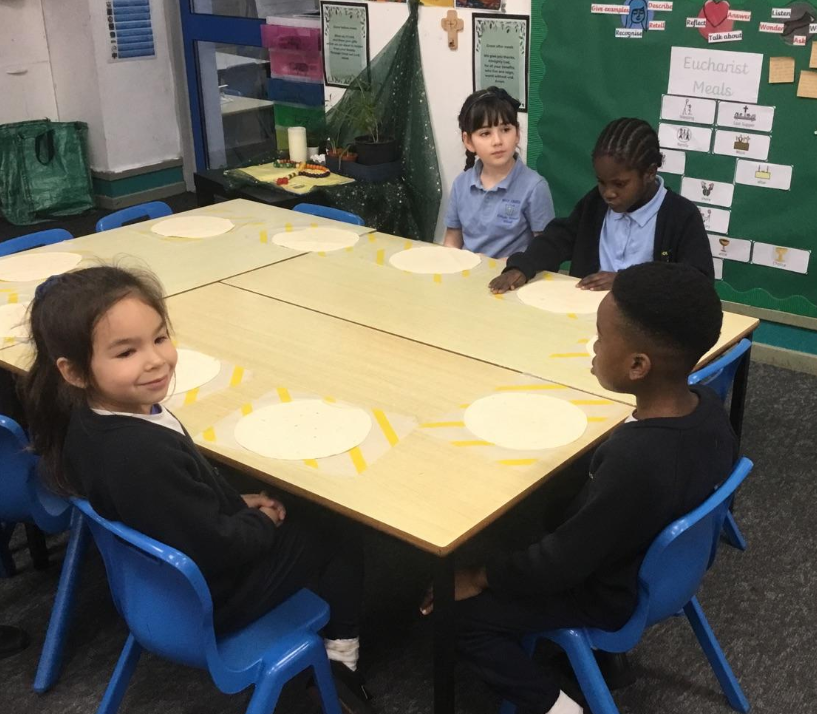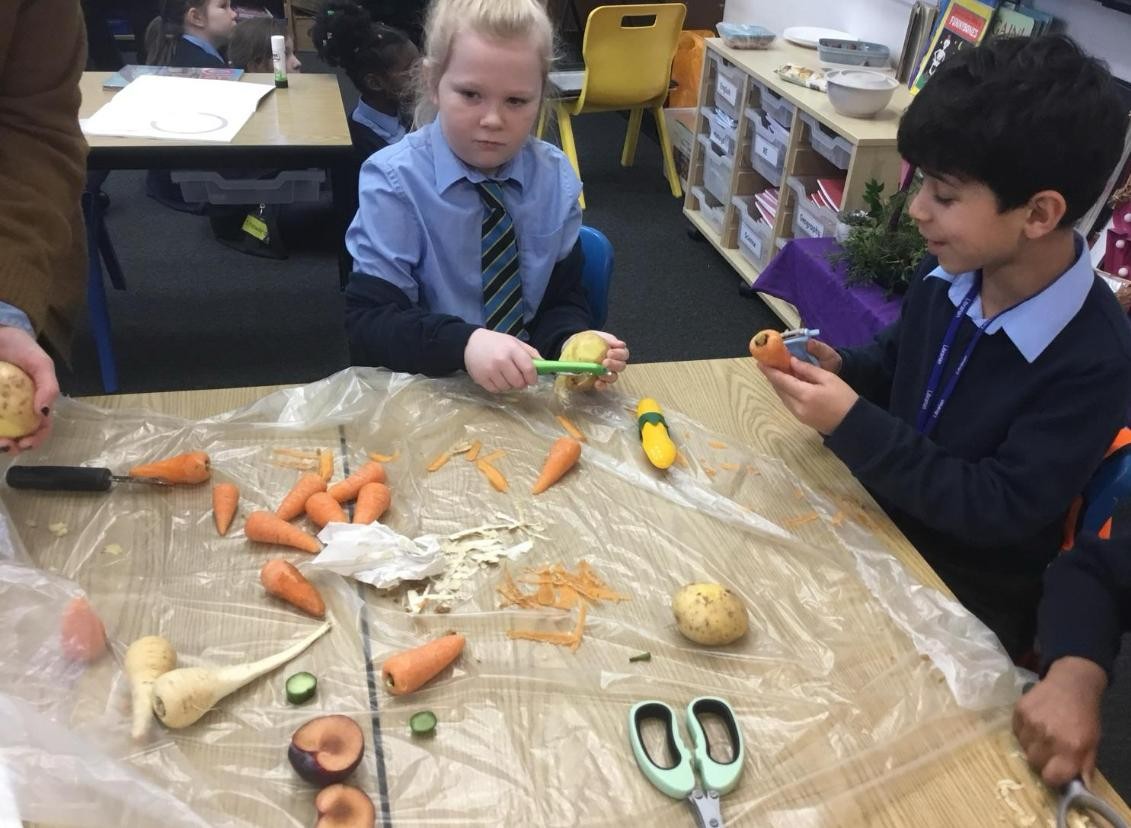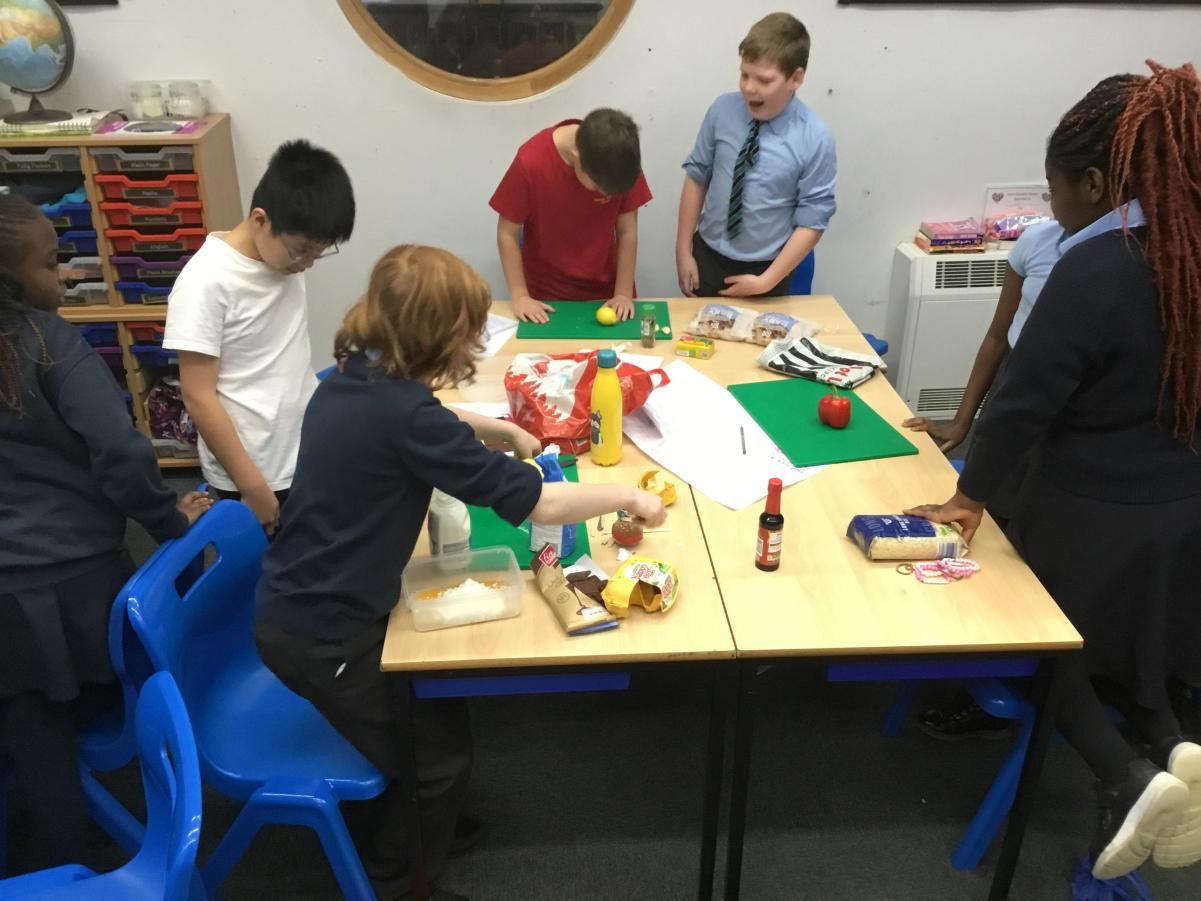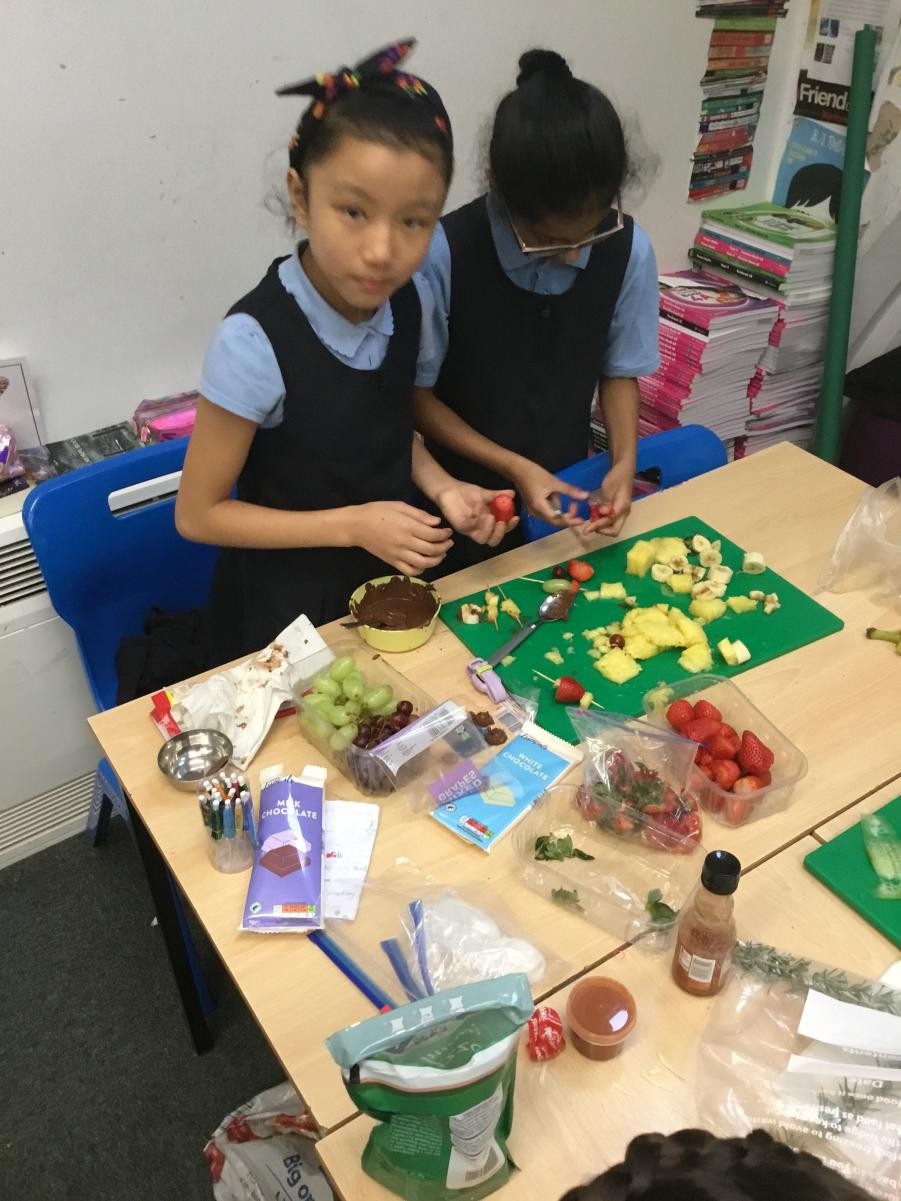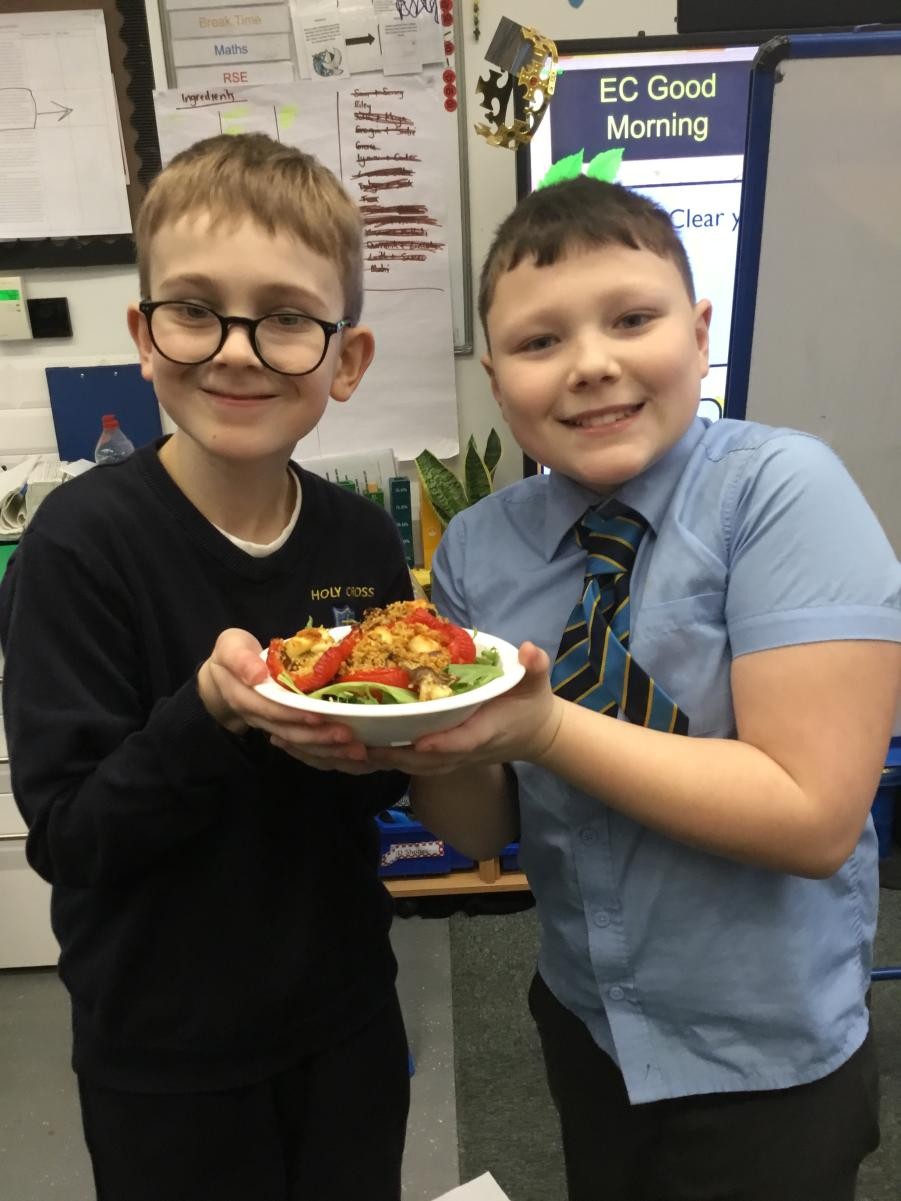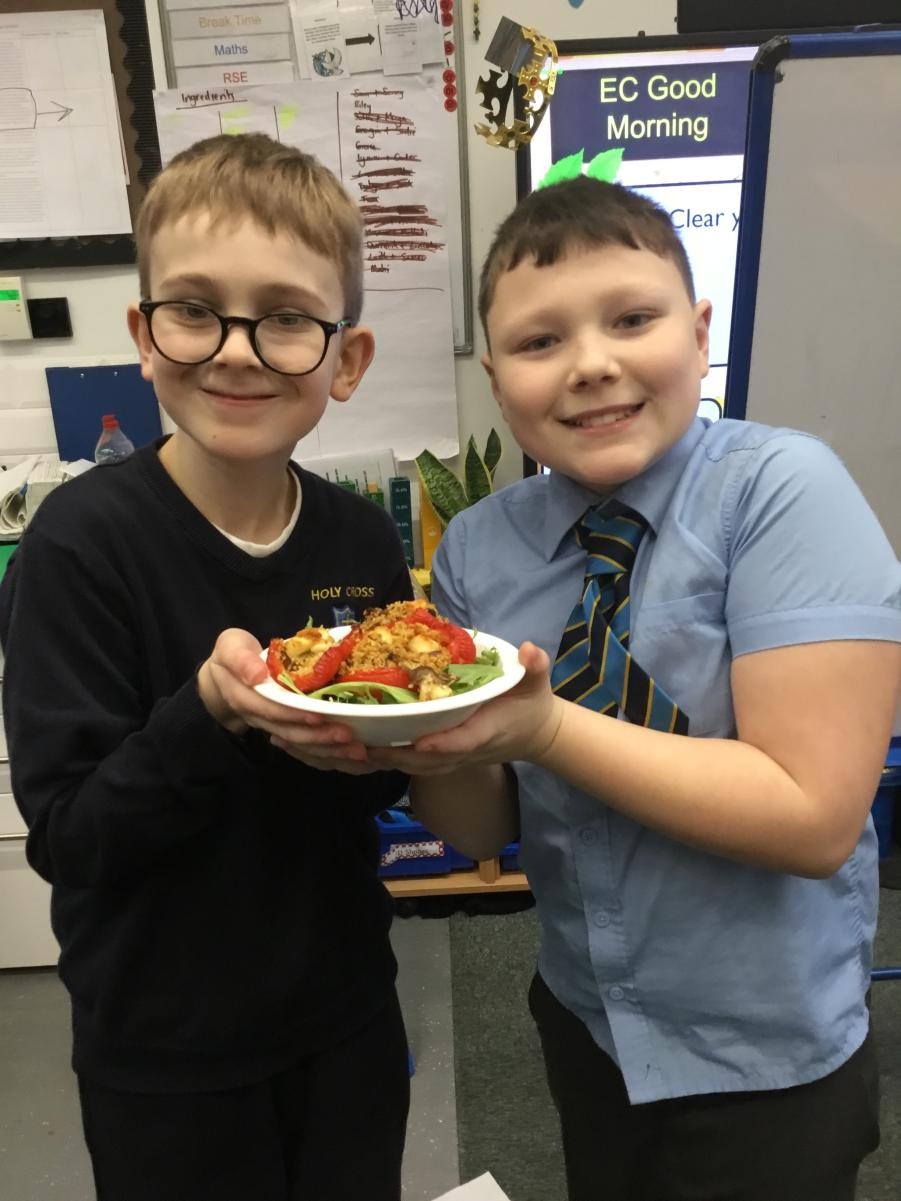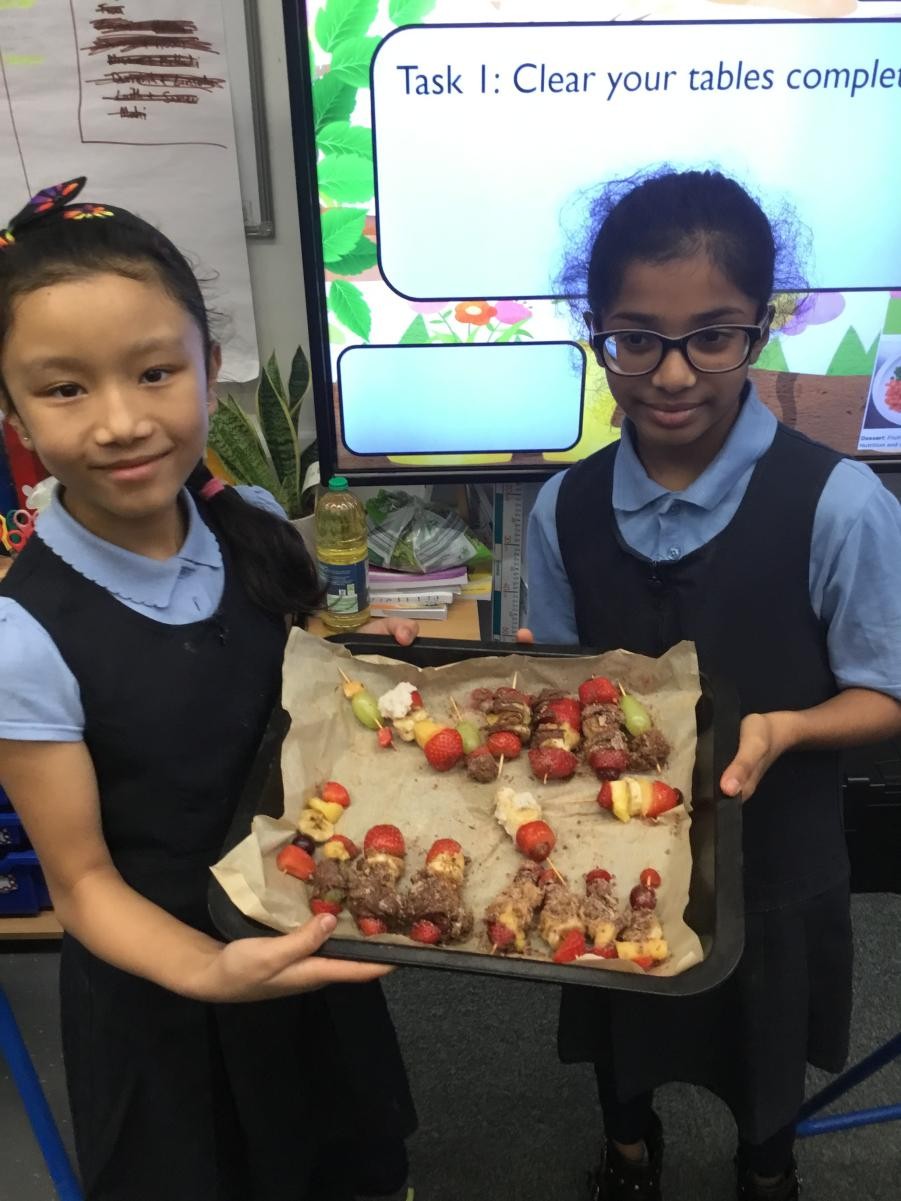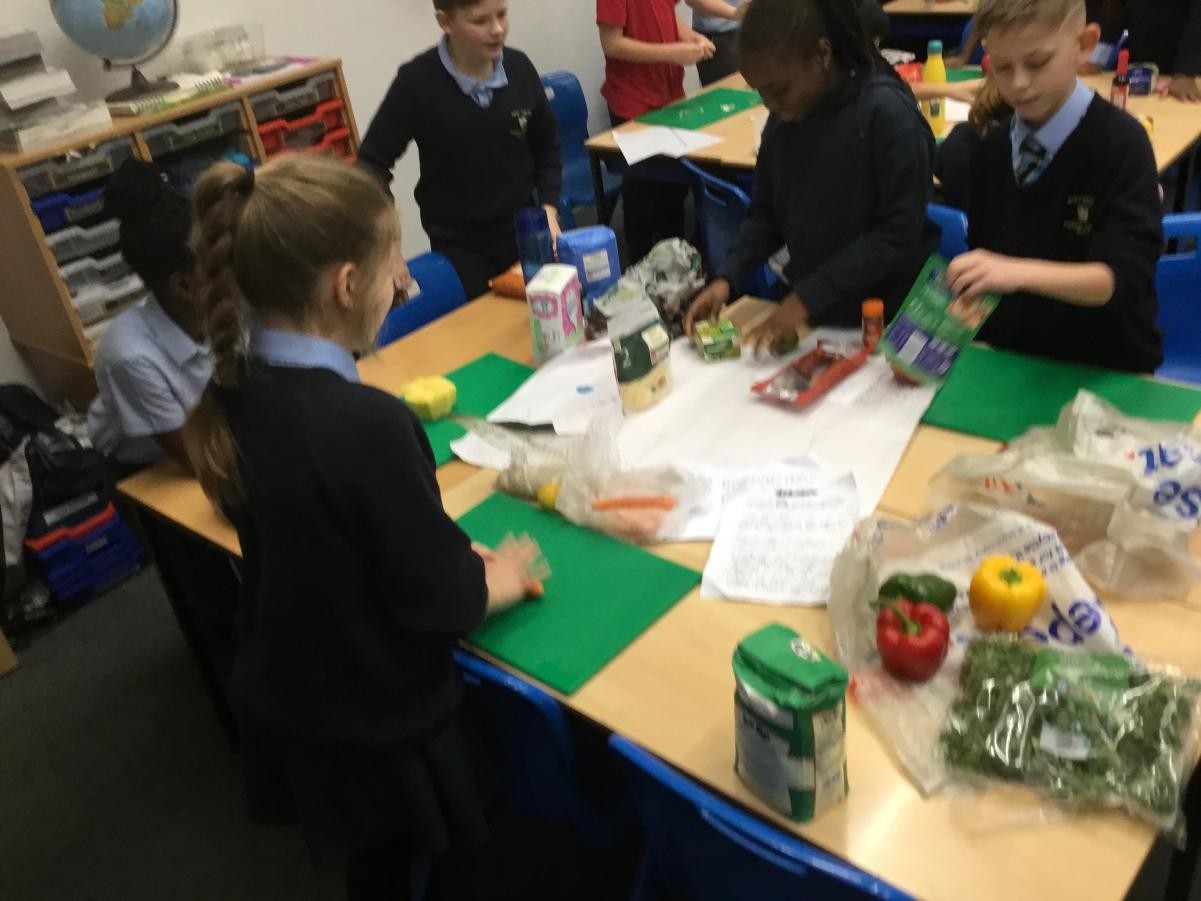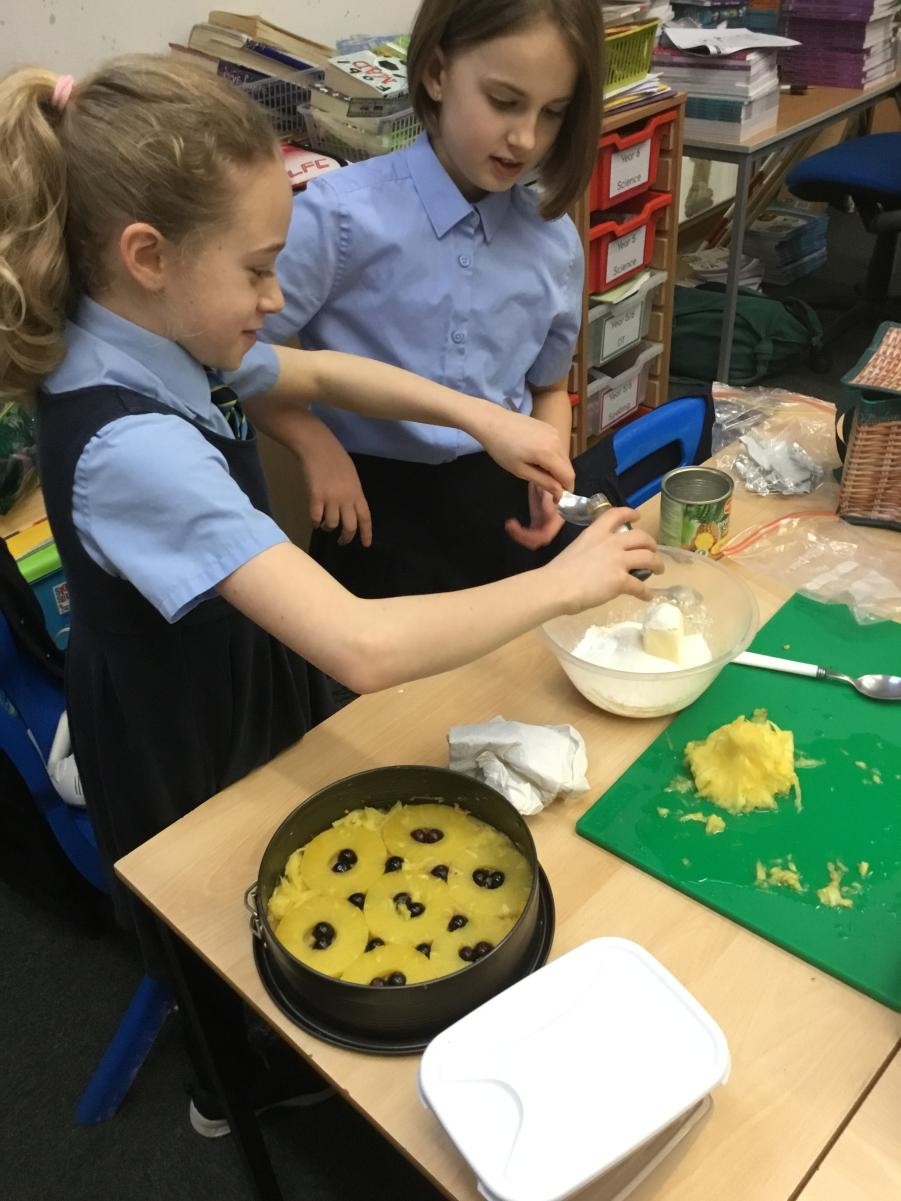Implementation
At Holy Cross Catholic Primary School, we are developing a curriculum which focuses on buildings skills and practising these in a range of contexts across the key stages . From this, we have planned a clear and comprehensive scheme of work in line with the National Curriculum. In Design Technology children are asked to solve problems and develop their own ideas and learning, therefore building pupils independence. Across the DT curriculum, we focus on ensuring pupils understand the elements of the design process: research, design, make and evaluate. These 4 elements are taught across all aspects of DT, so these is a consistency across the different aspects of the DT curriculum at all ages.
These 4 elements underpin each unit of work, below are examples of how this may look in a unit of learning for children.
Research - Pupils may look at existing products, discussing what makes it successful, what ideas they can imitate and use or what they may wish to improve upon. Children may also create surveys and questionnaires for potential consumers. From this, children will also create success criteria for their own products.
Design - Pupils will have opportunity to design their products using success criteria and knowledge from the research stage. Pupils will annotate sketches and designs with increasing depth as they move through the school. Design will also take place using CAD (computer aided design) in KS2. Pupils may gather feedback on their designs and amend, based on consumer needs.
Make - Pupils may create prototypes of products or spend time practising a new skill before they move on to making a final design. At this stage, teachers will model skills and allow children opportunity to problem solve on their own. The outcome of this stage is a finished product made by the pupils.
Evaluate - Pupils will look at their product and consider it's success compared to the criteria decided at the research stage. Pupils may gather feedback from consumers and then use this to write evaluations on their product. Pupils will use technical language learnt across the unit to discuss their design choices and the success of these.


